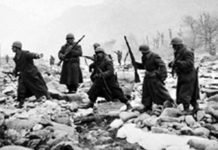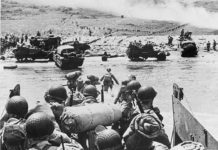These horsemen came from many different parts of the middle east and most retained an appearance reflecting their ethnic origins, with long hair and moustaches being popular amongst military men. The bulk of the cavalry arm in most Muslim armies was comprised of Turks, Armenians, Kurds and Arabs.
Faris recieved wages and booty for their services and could be rewarded with iqta – land grants -for distinguished service. These could, however, be taken back at any time.
Furusiya
Military skills associated with the faris were known as furusiya. The qualities expected in a faris were loyalty, obedience, steadiness in battle, horsemanship, good weapons and proficiency in their use. Exercises took place on a maydan (training ground).
Hunting was also popular and the skills honed whilst pursuing dangerous beasts such as lions (which still lived in the middle east at that time) could readily be translated into battlefield situations.
A mounted warrior would first learn to ride bareback before using a saddle. Stirrups were set further forward than those of European Knights and the Muslim rider rode with a sitting rather than standing posture.
By the 12th century, there was a medium between shock cavalry tactics and mounted archery. Muslim horse archery revolved around tightly-packed formations of warriors loosing arrows en masse, often whilst stationary. One tactic was for a squadron of horse archers to loose arrows at the enemy whilst lance-wielding cavalry attacked the foe in the flank.
Manuals in furusiya were written in which tactics, conduct, methods of payment and training were discussed.
The Equipment of the Faris
Contrary to widespread opinion, Muslim horsemen often wore armour and bore equipment that was every bit as heavy as that of Crusader Knights.
Most faris wore a hauberk of chain-mail or lamellar metal plates. This would be worn beneath a garment. Mail hauberks were known as dir and scale cuirasses were called jawshan. Some warriors wore two suits of armour. Helmets such as the baydah – the ‘egg helmet’ were popular. The riders face might be protected by a curtain, or aventail, of chain-mail.
There were many different types of shield – many faris carried the circular tur whilst others bore shields that resembled those of Knights.
The lance was an important weapon. Muslim warriors practised a two-handed style of lance-wielding, where a blow could allegedly transfix an opponent through two layers of mail. However, most commanders advised their warriors to couch their lances under one arm in the European manner.
Traditional Arabic swords such as the sayf were long, broad, straight-bladed and double edged. The sayf was descended from earlier Roman swords. Curved sabres were introduced by Persian and Seljuk warriors. There were many manuals on swordsmanship and they emphasised cutting rather than thrusting.
Surviving accounts indicate that swords were often incapable of penetrating good armour and faris were trained to cut at their opponents horses and unprotected parts of the body. Many warriors, particularly Turks, favoured the armour-smashing mace, which could be up to a metre in length.
The composite bows of horse-archers were crafted from wood, horn and sinew. In terms of weight, they were as powerful as later European longbows and easier to draw.
Horses
Most faris owned only one warhorse at a time and were consequently expected to take excellent care of it. Arabic horses were lighter and swifter than European breeds.
Sources:
- God’s warriors Knights Templar, Saracens and the Battle for Jerusalem, Dr Helen Nicholson and Dr David Nicolle, 2005, Osprey
- The Divine Campaigns AD 1100- 1200, Henry Woodhead and Staff of Time-Life Books
- Time Life Books, 1988








